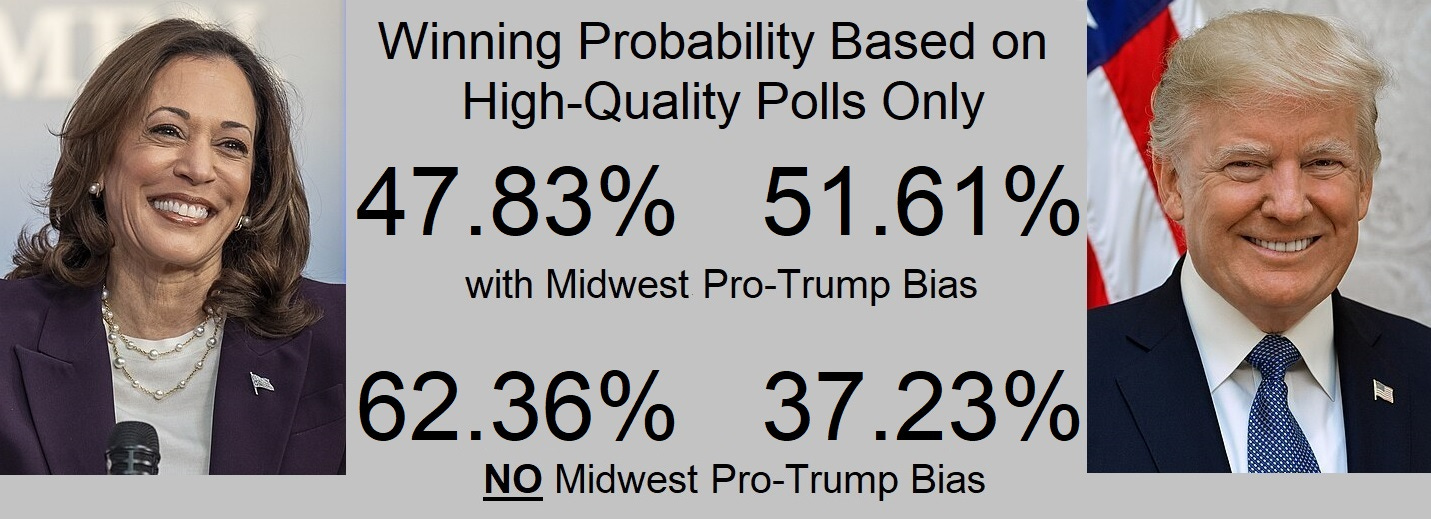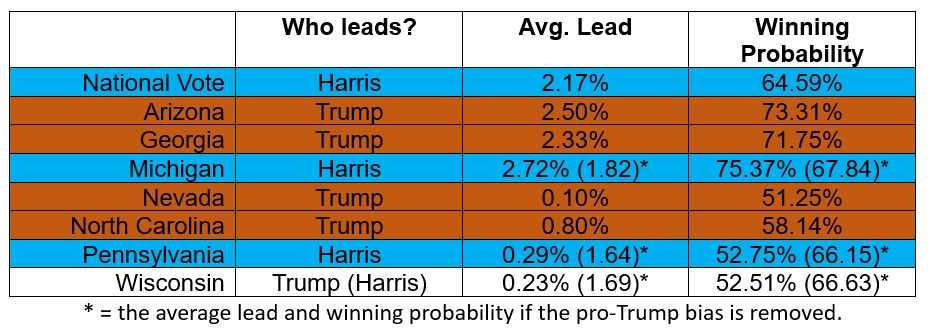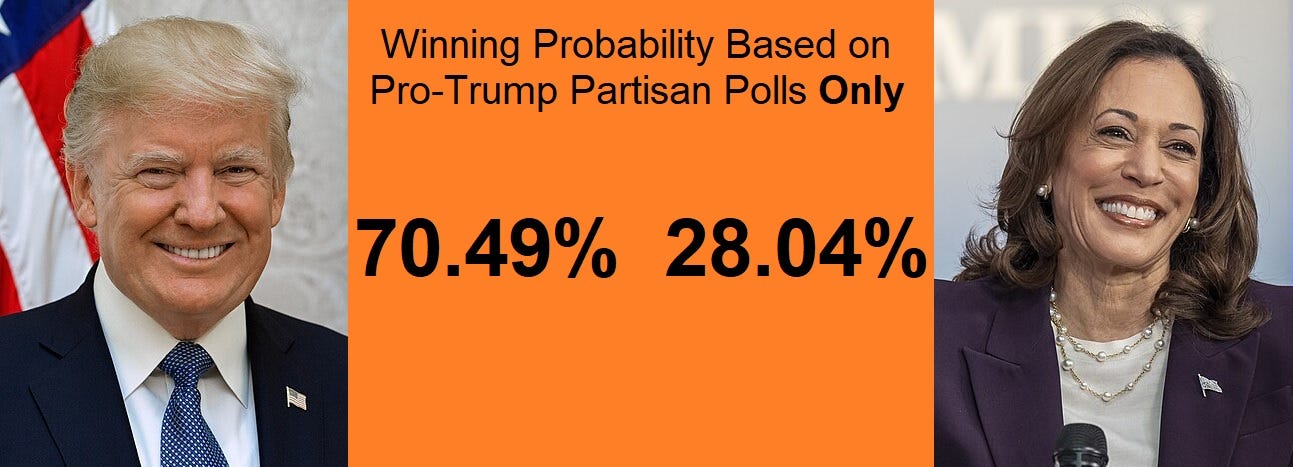Prediction Update and a New Model: Using Only Pro-Trump Partisan Polls
High-quality polls currently give Harris a 62.4% probability, while pro-Trump polls suggest a 70.5% chance of a Trump victory. This divergence largely stems from substantial differences in the Midwest
(Update November 5, 2024: The final model predictions are here)
Last week, I introduced a prediction model for the U.S. Presidential election based solely on high-quality polls, following claims from Democrats that pro-Trump pollsters were flooding polling aggregators and prediction sites with biased polls. Given that high-quality polls underestimated Trump’s Midwest support in both 2016 and 2020, I also developed a second model that incorporates a pro-Trump Midwest bias based on previous polling inaccuracies. In this initial analysis, the probability of a Harris victory was estimated at 64.36% using only high-quality polls and at 53.74% when factoring in the pro-Trump Midwest bias.
This article updates the original models with polling data from the past week and introduces a new, third model based solely on polls from pro-Trump partisan sources or pollsters with a known Republican bias.
Update (November 1)
Donald Trump improves his winning odds across all three models, caused by new polls for Pennsylvania. The good news for Kamala Harris? Her numbers are up in Michigan and Wisconsin. Not much change in other swing states.
Model Predictions
Recent polling data indicates a tightening race, with public sentiment showing a momentum shift in Trump’s favor. However, the “high-quality polls only” model detects a minor national shift towards Trump, which has had little effect on key battleground states. In fact, Harris’s odds have slightly improved in states like Michigan. Consequently, the projected probability of a Harris presidency has barely changed, now sitting at 62.36%. However, the increased tightening in national polls has heightened the pro-Trump Midwest bias in the second model, which now predicts a near tie, with Trump leading slightly at 51.61%.
Pro-Trump Partisan Polls
In the previous article, I suggested that using only high-quality polls could serve as a useful benchmark to set expectations, depending on political leanings. Similarly, analyzing only pro-Trump partisan polls offers an alternate benchmark and provides a comparison to high-quality polls, allowing us to assess their accuracy when the final results are available next week.
For this analysis, I define pro-Trump partisan polls as those commissioned by Republican-aligned organizations (e.g., Donald Trump, American Greatness, Red Eagle Politics, Article III Project) or those closely associated with the Trump campaign (e.g., Rasmussen, Trafalgar Group, Quantus Insights, Patriot Polling). Some polls were also included based on a strong Republican-leaning bias in previous election cycles.
In terms of quantity, pro-Trump partisan polls are more prevalent in certain states. Nationally, the ratio of high-quality polls to pro-Trump partisan polls is about 2:1. However, in battleground states such as Arizona, Michigan, Nevada, and Wisconsin, pro-Trump polls slightly outnumber high-quality ones in my dataset, thus providing some evidence for the “flooding” hypothesis.
Here are the results from the “pro-Trump partisan polls” only model:
Trump emerges as the clear favorite in this model, with a 70.49% probability of winning, compared to Harris’s 28.04%. This model predicts Trump victories in all battleground states and even has him slightly ahead in the national popular vote by about 0.47 percentage points.
Interestingly, the Trump partisan polls show similar Harris probabilities to the high-quality model in states like Georgia, Nevada, and North Carolina, with the partisan polls even predicting a stronger Harris performance in Arizona. However, there are two notable differences: first, the pro-Trump partisan polls forecast a much stronger Trump showing nationally; second, they predict a significantly better performance for Trump in the Midwest (Michigan, Pennsylvania, and Wisconsin).
Currently, pro-Trump partisan polls align closely with high-quality polls in battleground states where both models predict a Trump victory. In states with a Harris lead, however, the pro-Trump polls diverge substantially, leading to a higher overall probability of a Trump presidency in this model.
Essentially, the Trump partisan polls model amplifies the “high-quality polls with a pro-Trump Midwest bias” model, with an even stronger bias toward Trump in the Midwest.
(All models will be updated with new data before election day.)






Very nice post. I like the idea of breaking out the pro-Trump polls. Try doing the same with pro-Harris--I guess you're already probably planning on doing that in a day or two.
I'll advertise my recent article: https://ericrasmusen.substack.com/p/329614-election-crimes-were-detected